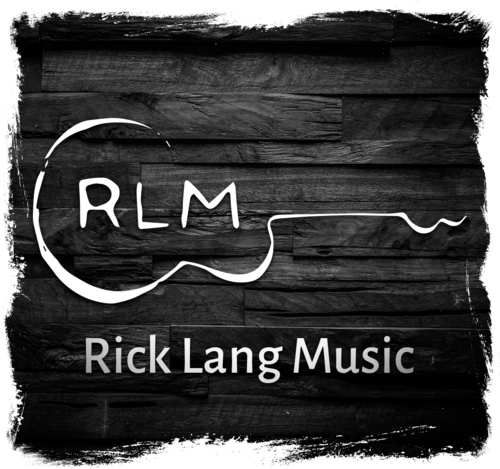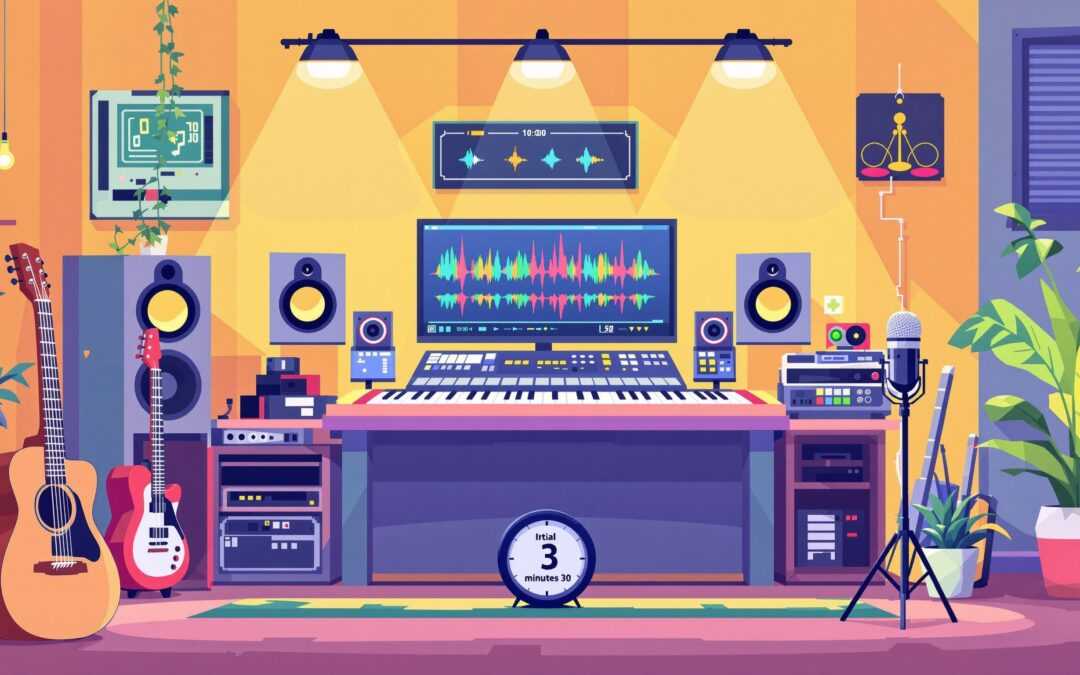Writing melodies over chords doesn’t have to be complicated. Here’s a quick summary of the 7 key tips to help you craft memorable melodies that work seamlessly with your chord progressions:
- Learn Your Chord Progression: Understand the key, scale, and chord tones to create a strong foundation.
- Start with Chord Notes: Use the root, third, and fifth of each chord as anchor points for your melody.
- Add Color Notes: Incorporate passing notes and tension notes to add variety and emotional depth.
- Work on Rhythm and Shape: Experiment with note durations, rests, and movement to give your melody dynamic flow.
- Use Patterns and Changes: Create repeatable motifs and introduce variations to keep your melody engaging.
- Match Your Song’s Feel: Align your melody with the emotional tone of your chord progression.
- Build and Release Tension: Balance tension and resolution to evoke emotion and keep listeners hooked.
These steps will help you write melodies that stand out and connect with your audience. Start by mastering the basics, then experiment with rhythm, movement, and emotion to make your melodies truly your own.
1. Learn Your Chord Progression
Start by getting a solid grasp of your chord progression. This forms the backbone of your melody, helping it flow naturally with your harmonic structure.
Identify the Key and Scale
Figuring out the key and scale of your song is step one. A good place to start is by looking at the first and last chords in your progression – they often reveal the key. For instance, if your progression begins and ends with C major and primarily includes chords from the C major scale (C, Dm, Em, F, G, Am, B°), chances are you’re in C major.
To pinpoint your scale:
- Write down the chords in your progression.
- Identify the tonic (home) chord.
- List the notes in your chords.
- Compare them to common scale patterns to find the match.
Break Down Chord Notes
Deconstructing each chord into its individual notes gives you strong melody-building blocks. Here’s a quick reference:
| Chord Type | Notes Structure | Example (C chord) |
|---|---|---|
| Major | Root, 3rd, 5th | C, E, G |
| Minor | Root, ♭3rd, 5th | C, E♭, G |
| Seventh | Root, 3rd, 5th, ♭7th | C, E, G, B♭ |
Use these notes as your guide:
- Root notes: These are your melody’s strongest anchor points.
- Third notes: They define whether the chord is major or minor.
- Seventh notes: Add a sense of tension and movement.
- Extensions (like 9ths, 11ths, and 13ths): Offer more complex melodic possibilities.
Once you’ve mapped out these chord tones, you’re ready to start crafting melodies that align beautifully with your harmonic framework.
2. Start with Chord Notes
Your chord tones act as a guide for creating a melody that aligns perfectly with your progression. Use these tones as the foundation to craft your melody.
Focus on Key Chord Notes
Highlight the root, third, and fifth of each chord, especially on strong beats, to create a sense of stability and resolution.
| Beat Position | Note Choice | Effect |
|---|---|---|
| Strong beats (1, 3) | Root or fifth | Creates a stable, grounded feel |
| Weak beats (2, 4) | Third | Adds a touch of movement and color |
| Phrase endings | Root notes | Provides a solid, resolved conclusion |
Once you’ve outlined your melody with these notes, refine it by connecting them smoothly.
Smooth Transitions Between Notes
Ensuring smooth transitions between chord tones helps maintain a cohesive and flowing melody.
- Step-wise motion: Move directly from one chord tone to the next in small, step-like intervals. For example, transitioning from C major to F major, the note E can step down to F.
- Common tones: Identify shared notes between consecutive chords and use them as bridges. For instance, G works well as a pivot between C major (fifth) and Em (third).
- Balanced movement: Combine larger leaps with step-wise motion to create a natural and dynamic flow.
These techniques will help you shape a melody that feels connected and engaging.
3. Add Color Notes
After you’ve got your chord tones down, it’s time to spice things up by adding notes outside the chord. These notes can give your melody a distinct character when used thoughtfully.
Add Passing Notes
Passing notes help connect chord tones, making your melody flow smoothly. They act as a bridge between chord tones and add variety to your musical lines.
Here’s a quick breakdown of passing notes:
| Movement Type | Description | Example (in C Major) |
|---|---|---|
| Stepwise | Moves through scale notes between chord tones | C to D to E (C and E are chord tones) |
| Chromatic | Uses semitones between chord tones | C to C# to D (C and D are chord tones) |
| Neighbor | Moves to a nearby note and back | E to F and back to E |
For balance, keep chord tones on the strong beats and passing notes on the weaker beats. This keeps the harmony stable while adding movement. Once you’ve mastered this, you can explore tension notes for even more depth.
Use Tension Notes
Tension notes bring a bit of dissonance to your melody, creating a sense of drama that resolves beautifully. These notes add emotional layers and make your music more engaging.
Here are some popular ways to use tension notes:
- Suspensions: Hold a note from the previous chord into the next one before resolving it.
- Appoggiaturas: Approach a chord tone from a note just above or below it.
- Neighbor Tones: Move briefly away from a chord tone and then return to it.
To make tension notes work:
- Use only one or two per phrase to avoid overcrowding your melody.
- Resolve them to the nearest chord tone for a satisfying effect.
- Place them on weak beats and resolve them on strong beats.
- Think about the emotion you’re aiming for – more tension means a more powerful release.
These techniques can transform a simple melody into something far more expressive and dynamic.
sbb-itb-1c6af30
4. Work on Rhythm and Shape
Once your chord tones and color notes are in place, it’s time to focus on rhythm and how your melody moves.
Experiment with Rhythms
The rhythm of your melody is just as crucial as the notes you choose. A strong melody balances note lengths and pauses to keep it interesting and emotionally impactful.
| Rhythm Type | Purpose | When to Use |
|---|---|---|
| Long Notes | Add stability and emphasis | Emotional peaks, phrase endings |
| Short Notes | Bring energy and motion | Transitions, building intensity |
| Syncopation | Add tension and groove | Highlighting unexpected moments |
| Rests | Provide breathing room | Separating phrases, dramatic pauses |
Blend longer and shorter notes to create a dynamic feel while maintaining a steady pulse that’s easy to follow. Start simple and add complexity as you get more comfortable with your chord progression. After nailing the rhythm, focus on how your melody flows.
Shape Your Melody’s Movement
The way your melody moves has a big impact on its emotional pull and how memorable it is. Here are some key ideas to guide your movement:
- Small Steps: Moving by one or two notes creates smooth, easy-to-sing lines. These work well for verses or quieter sections.
- Large Jumps: Bigger intervals (like fourths or more) bring drama and emphasis. Save these for big moments like choruses or emotional climaxes.
- Direction Changes: Alternating between ascending and descending patterns keeps things fresh and engaging.
To make your melody feel natural:
- Think about the overall shape of each phrase – ascending lines build tension, while descending lines feel like a release.
- Use mostly small, stepwise moves with occasional leaps for contrast.
- Match the melody’s movement to the energy of your song.
The best melodies strike a balance between patterns listeners can predict and surprising twists that keep them interested. Let your chord progression guide you, but use rhythm and movement to give your melody its own personality.
5. Use Patterns and Changes
Once you’ve established a rhythmic foundation and melodic flow, it’s time to refine your melody with patterns and thoughtful tweaks. A great melody strikes a balance between repetition and variation, making it both memorable and engaging. Start by breaking your melody into short, repeatable patterns.
Create Short Patterns
The secret to a memorable melody often lies in creating simple, repeatable patterns, also known as motifs. These patterns act as the building blocks of your melody and should be both clear and easy to recognize.
| Pattern Type | Length | Best Used For |
|---|---|---|
| Micro Motif | 2-3 notes | Quick hooks, verse beginnings |
| Short Phrase | 4-8 notes | Chorus hooks, main themes |
| Extended Pattern | 8-16 notes | Bridge sections, verse development |
When designing these patterns:
- Stick to a clear rhythmic or interval structure.
- Start with something simple that can be expanded later.
- Ensure it aligns naturally with your chord progression.
- Hum the pattern to check its clarity and ease of recall.
Change Patterns
After establishing your core patterns, keep your melody dynamic by introducing variations. These subtle changes can breathe new life into your melody without losing its essence.
| Variation Type | Description | Effect |
|---|---|---|
| Rhythmic Shift | Adjust note timing while keeping pitches | Adds energy and groove |
| Pitch Alteration | Change specific notes but keep the rhythm | Creates harmonic interest |
| Pattern Extension | Add extra notes to the original pattern | Gradually increases depth |
| Direction Change | Invert or reverse the pattern | Brings a fresh perspective |
When applying variations:
- Start with small changes to maintain the melody’s identity.
- Introduce bigger shifts as the song builds or progresses.
- Use these changes to emphasize key sections of your song.
- Align variations with the emotional tone of your chord progression.
6. Match Your Song’s Feel
Your melody should work hand in hand with your chord progression to convey emotion. Together, they form the heart of your song, shaping its emotional tone and making it resonate with listeners.
Build and Release Tension
Tension is a powerful tool in music – it adds drama and makes the resolution more satisfying. By combining your chord tones and melody, you can create a sense of movement that mirrors the highs and lows of your song.
| Tension Type | Musical Technique | Emotional Effect |
|---|---|---|
| Harmonic | Add non-chord tones | Builds anticipation |
| Rhythmic | Use syncopation | Adds energy |
| Melodic | Increase pitch sequences | Heightens intensity |
| Resolution | Return to chord tones | Brings relief |
Here’s how to effectively use tension:
- Start with stable chord tones.
- Gradually introduce non-chord tones to create anticipation.
- Use higher pitches and longer notes to intensify climaxes.
- Resolve tension by landing back on chord tones.
Follow Chord Emotions
Your melody should not only complement the chords but also amplify their emotional character. Each type of chord brings a distinct mood, and your melody can reflect that.
- Major chords bring brightness and confidence. Use wider intervals, highlight the major third, and create ascending melodic lines.
- Minor chords feel introspective. Opt for closer intervals, emphasize the minor third and sixth, and lean into descending lines.
- Diminished or augmented chords are inherently tense. Use chromatic notes, shorter phrases, and embrace their edgy quality.
Think of your melody as a guide through the emotional landscape of your chord progression. If your chords build toward a powerful chorus, let your melody rise to match that energy. When the harmony resolves into a calm moment, let your melody settle naturally, offering a sense of closure.
Conclusion
Quick Tips Recap
| Technique | Core Focus | Key Benefit |
|---|---|---|
| Learn Chord Progression | Identify key, scale, and chord notes | Lays the groundwork for harmony |
| Start with Chord Notes | Use strong chord tones as anchors | Keeps the melody grounded |
| Add Color Notes | Include passing and tension notes | Brings variety and movement |
| Work on Rhythm | Try different note durations | Makes the melody more dynamic |
| Use Patterns | Create repeatable melodic motifs | Helps make songs memorable |
| Match Song Feel | Align with emotional tone | Adds depth and connection |
| Build/Release Tension | Balance tension and resolution | Evokes emotional reactions |
Refer back to this table during your practice sessions to strengthen your skills.
Next Steps
With these techniques in hand, it’s time to incorporate them into your songwriting routine. Break your practice into manageable steps with clear, measurable goals. Here’s a simple plan to get started:
- Dedicate 20 minutes daily to exploring I-IV-V chord and melody combinations.
- Write three unique melodies over a single chord progression.
- Complete a full song using these melodic principles.
Keep track of your progress and lean on AI tools when you hit creative roadblocks. These tools can help you stay on track while focusing on crafting melodies that feel personal and engaging.
"Transform your songwriting with SMART goals to enhance focus, productivity, and creativity by defining clear, measurable objectives." – Write.Record.Release.com
Stay consistent in your practice, and once you’ve mastered the basics, let your creativity take over.











